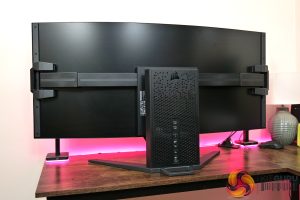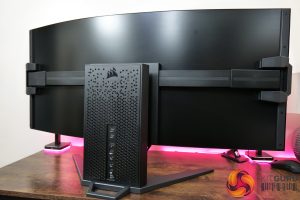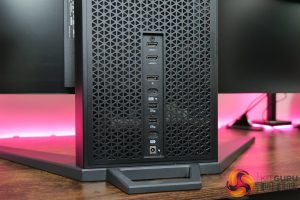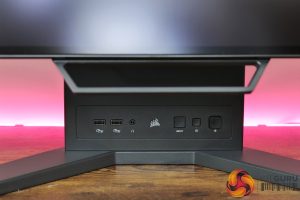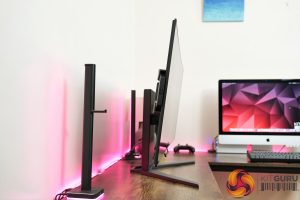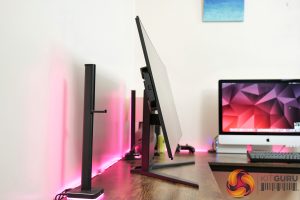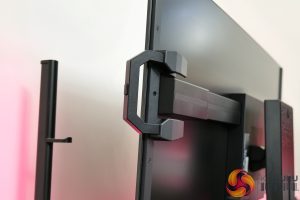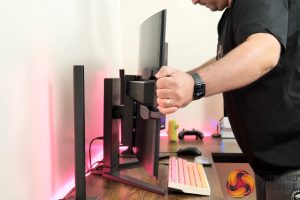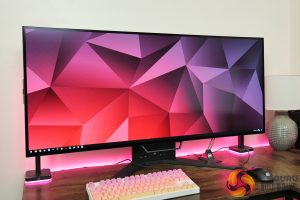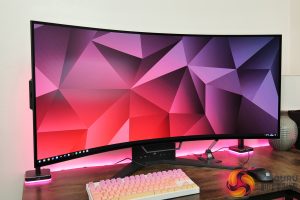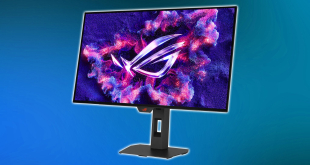The overall styling of the Corsair Xeneon Flex is rather low-key – that is if you exclude its sheer size and flex mechanism! Still, it's entirely black, there's no RGB lighting, and the only visual flair comes from Corsair's triangular design elements that are dotted on the screen's rear hub.
You can see the flex mechanism itself stretching across the length of the panel, with separate brackets used for the left and right side of the display, so you can actually curve each side independently of the other. We show the process below via photos, but this is also included in our video review.
We'd guess that the flex mechanism is the reason why Corsair has done something a bit different with the I/O. All of the ports are stacked vertically on top of each other, with the following connectors available: 2x HDMI 2.1, 1x DisplayPort 1.4, 1x USB-C with 30W Power Delivery and DP Alt mode support, 2x USB 5Gbps downstream, 1x USB-C 5Gbps upstream.
The front I/O also delivers another pair of USB downstream ports and a headphone jack, along with a 5-way joystick to navigate the OSD, a button to switch between the video inputs, and the power button.
Ergonomic adjustments are sadly very limited, as we only get tilt from -7 to +15 degrees. This is due to the flex mechanism, and third party VESA mounts are not supported. Corsair did tell us they are working on a desk mount, but that won't be available until next year, and it's currently unclear how that would work.
Operating the flex mechanism itself is very simple. Corsair has included a retractable handle on either side of the screen, and these can be pulled out from the screen by pressing the small button to unlock the mechanism. Once the handles are extended, being careful not to put your thumbs on the panel itself, one can simply pull the screen towards yourself. There's an audible click when the screen hits its maximum 800R curvature, and it also clicks when fully flat.
As both side of the screen can be adjusted independently, I did find it occasionally problematic to get both sides of the screen at a matching curvature. Corsair did tell us that they are working on adding more noticeable ‘steps' to the mechanism, something my prototype was certainly lacking.
The handles themselves do feel a touch wobbly too, as they are tractable there was a bit of play in the mechanism for this so that's also something Corsair could tighten up. As the handles are made entirely from plastic too, I do wonder if they could have been made from metal as a fair bit of force does go through them, but there is a 3-year warranty to offer peace of mind.
Above we get a look at the screen fully flat, on the left, and curved out to the 800R curvature on the right.
 KitGuru KitGuru.net – Tech News | Hardware News | Hardware Reviews | IOS | Mobile | Gaming | Graphics Cards
KitGuru KitGuru.net – Tech News | Hardware News | Hardware Reviews | IOS | Mobile | Gaming | Graphics Cards


